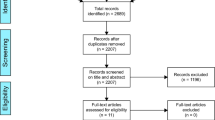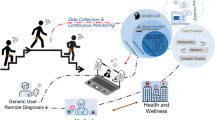Abstract
Introduction
This study aimed to develop artificial intelligence models for predicting hip implant failure from radiological features. Analyzing the evolution of the periprosthetic bone and implant’s position throughout the entire follow-up period has shown the potential to be more relevant in outcome prediction than simply considering the latest radiographic images. Thus, we investigated an AI-based model employing a small set of evolutional parameters derived from conventional radiological features to predict hip prosthesis failure.
Materials and methods
One hundred sixty-nine radiological features were annotated from historical anteroposterior and lateral radiographs for 162 total hip arthroplasty patients, 32 of which later underwent implant failure. Linear regression on each patient’s chronologically sorted radiological features was employed to derive 169 corresponding evolutional parameters per image. Three sets of machine learning predictors were developed: one employing the original features (standard model), one the evolutional ones (evolutional model), and the last their union (hybrid model). Each set included a model employing all the available features (full model) and a model employing the few most predictive ones according to Gini importance (minimal model).
Results
The evolutional and hybrid predictors resulted highly effective (area under the ROC curve (AUC) of full models = 0.94), outperforming the standard one, whose AUC was only 0.82. The minimal hybrid model, employing just four features, three of which evolutional, scored an AUC of 0.95, proving even more accurate than the full one, exploiting 173 features. This tool could be shaped to be either highly specific (sensitivity: 80%, specificity: 98.6%) or highly sensitive (sensitivity: 90%, specificity: 92.4%).
Conclusion
The proposed predictor may represent a highly sensitive screening tool for clinicians, capable to predict THA failure with an advance between a few months and more than a year through only four radiological parameters, considering either their value at the latest visit or their evolution through time.












Similar content being viewed by others
Availability of data and materials
All data are available on a digital repository.
References
Ferguson RJ, Palmer AJ, Taylor A et al (2018) Hip replacement. Lancet 392:1662–1671. https://doi.org/10.1016/S0140-6736(18)31777-X
Pivec R, Johnson AJ, Mears SC, Mont MA (2012) Hip arthroplasty. Lancet 380:1768–1777. https://doi.org/10.1016/S0140-6736(12)60607-2
Bozic KJ, Kurtz SM, Lau E et al (2009) The epidemiology of revision total hip arthroplasty in the United States. J Bone Jt Surg Am 91:128–133. https://doi.org/10.2106/JBJS.H.00155
Chang CB, Shetty GM, Lee JS et al (2017) A combined closing wedge distal femoral osteotomy and medial reefing procedure for recurrent patellar dislocation with genu valgum. Yonsei Med J 58:878–883. https://doi.org/10.3349/ymj.2017.58.4.878
Vanrusselt J, Vansevenant M, Vanderschueren G, Vanhoenacker F (2015) Postoperative radiograph of the hip arthroplasty: what the radiologist should know. Insights Imaging 6:591–600. https://doi.org/10.1007/s13244-015-0438-5
Gurung B, Liu P, Harris PDR et al (2022) Artificial intelligence for image analysis in total hip and total knee arthroplasty: a scoping review. Bone Jt J 104-B:929–937. https://doi.org/10.1302/0301-620X.104B8.BJJ-2022-0120.R2
Klemt C, Cohen-Levy WB, Robinson MG et al (2023) Can machine learning models predict failure of revision total hip arthroplasty? Arch Orthop Trauma Surg 143:2805–2812. https://doi.org/10.1007/s00402-022-04453-x
Klemt C, Laurencin S, Alpaugh K et al (2022) The utility of machine learning algorithms for the prediction of early revision surgery after primary total hip arthroplasty. J Am Acad Orthop Surg 30:513–522. https://doi.org/10.5435/JAAOS-D-21-01039
Shohat N, Goswami K, Tan TL et al (2020) 2020 Frank Stinchfield award: identifying who will fail following irrigation and debridement for prosthetic joint infection. Bone Joint J 102-B:11–19. https://doi.org/10.1302/0301-620X.102B7.BJJ-2019-1628.R1
Cuthbert AR, Giles LC, Glonek G et al (2022) A comparison of survival models for prediction of eight-year revision risk following total knee and hip arthroplasty. BMC Med Res Methodol 22:164. https://doi.org/10.1186/s12874-022-01644-3
Pakarinen O, Karsikas M, Reito A et al (2022) Prediction model for an early revision for dislocation after primary total hip arthroplasty. PLoS ONE 17:e0274384. https://doi.org/10.1371/journal.pone.0274384
Muscato F, Corti A, Manlio Gambaro F, Chiappetta K, Loppini M, Corino VDA (2023) Combining deep learning and machine learning for the automatic identification of hip prosthesis failure: Development, validation and explainability analysis. Int J Med Inform 176:105095. https://doi.org/10.1016/j.ijmedinf.2023.105095
Loppini M, Gambaro FM, Chiappetta K, Grappiolo G, Bianchi AM, Corino VDA (2022) Automatic identification of failure in hip replacement: an artificial intelligence approach. Bioengineering (Basel) 9:288. https://doi.org/10.3390/bioengineering9070288
Niimi R, Kono T, Nishihara A et al (2015) Cortical thickness of the femur and long-term bisphosphonate use. J Bone Miner Res 30:225–231. https://doi.org/10.1002/jbmr.2345
Loppini M, Longo UG, Caldarella E et al (2017) Femur first surgical technique: a smart non-computer-based procedure to achieve the combined anteversion in primary total hip arthroplasty. BMC Musculoskelet Disord 18:331. https://doi.org/10.1186/s12891-017-1688-9
Cheng H, Chawla A, Yang Y et al (2017) Development of nanomaterials for bone-targeted drug delivery. Drug Discov Today 22:1336–1350. https://doi.org/10.1016/j.drudis.2017.04.021
Louppe G, Wehenkel L, Sutera A, Geurts P (2013) Understanding variable importances in forests of randomized trees. Proceedings of the 26th international conference on neural information processing systems, volume 1. Curran Associates Inc., Red Hook, pp 431–439
Hanley JA, McNeil BJ (1983) A method of comparing the areas under receiver operating characteristic curves derived from the same cases. Radiology 148:839–843. https://doi.org/10.1148/radiology.148.3.6878708
VassarStats: Statistical Computation Web Site (2023) http://vassarstats.net/. Accessed 17 Mar 2023
Pedregosa F, Varoquaux G, Gramfort A et al (2011) Scikit-learn: machine learning in python. J Mach Learn Res 12:2825–2830
Lemaitre G, Nogueira F, Aridas CK (2017) Imbalanced-learn: a python toolbox to tackle the curse of imbalanced datasets in machine learning. J Mach Learn Res 18:1–5
Mushtaq N, To K, Gooding C, Khan W (2019) Radiological imaging evaluation of the failing total hip replacement. Front Surg 6:35. https://doi.org/10.3389/fsurg.2019.00035
Funding
The authors declare that part of the work was carried out with a research grant (GR-2018–12367275) from the Italian Ministry of Health. No other funds, grants, or other support were received during the preparation of this manuscript.
Author information
Authors and Affiliations
Contributions
All authors contributed to the study conception and design. Material preparation, data collection, and analysis were performed by M.L., V.C., M.B., and F.M.G. The first draft of the manuscript was written by M.B. and all authors commented on previous versions of the manuscript. All authors read and approved the final manuscript.
Corresponding author
Ethics declarations
Conflict of interest
G.G. declares royalties and licenses from Zimmer Biomet, Innomed, and Adler Ortho; Financial support for attending symposia and educational programs from Zimmer Biomet. M.L. declares a research grant (GR-2018-12367275) to IRCCS Humanitas Research Hospital from the Italian Ministry of Health and research grants to Fondazione Livio Sciutto—ONLUS to perform postmarket study for medical devices from Zimmer Biomet; Financial support for attending symposia and educational programs from Zimmer Biomet. V.C. and M.B. and F.M.G. and C.K. declare no conflict of interest.
Ethical approval
The current study was approved by the Ethical Committee of Humanitas Research Hospital (protocol number ICH-ORT-2019-01).
Consent to participate
A consent to participate in the study was signed by each participating patient.
Consent to publish
All authors have given their consent to publish the current paper.
Additional information
Publisher's Note
Springer Nature remains neutral with regard to jurisdictional claims in published maps and institutional affiliations.
Rights and permissions
Springer Nature or its licensor (e.g. a society or other partner) holds exclusive rights to this article under a publishing agreement with the author(s) or other rightsholder(s); author self-archiving of the accepted manuscript version of this article is solely governed by the terms of such publishing agreement and applicable law.
About this article
Cite this article
Bulloni, M., Gambaro, F.M., Chiappetta, K. et al. AI-based hip prosthesis failure prediction through evolutional radiological indices. Arch Orthop Trauma Surg 144, 895–907 (2024). https://doi.org/10.1007/s00402-023-05069-5
Received:
Accepted:
Published:
Issue Date:
DOI: https://doi.org/10.1007/s00402-023-05069-5




